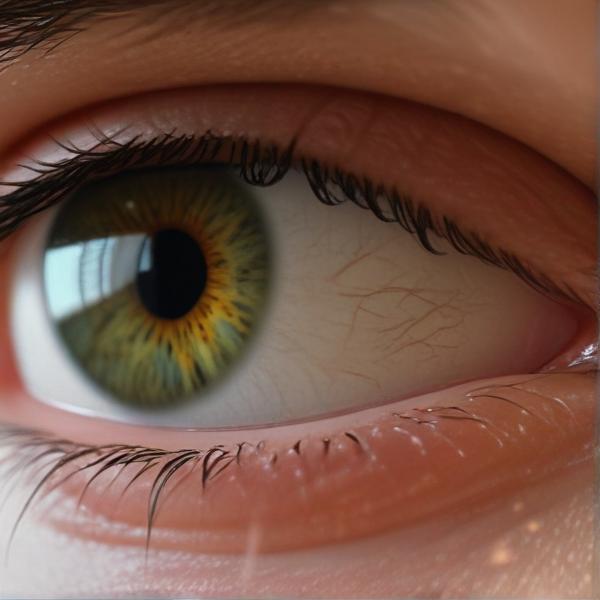基本信息 (Basic Information)
含义与用法 (Meanings & Usage)
中文核心释义 (Core Chinese Meaning): 注视、观看、用眼睛观察。
英文核心释义 (Core English Meaning): to look at, to watch, to see
象形意义 / 为何这么写 (Pictographic Meaning / Writing Rationale)
文言文释义 (Classical Chinese Meaning)
与现代意义相近,主要指注视、看见,有时也指探望、显示。Similar to modern meaning; mainly refers to watching, seeing, or sometimes visiting and displaying.
深入学习 (In-depth Study)
字源故事 (Origin Story)
字形演变 (Character Evolution)
常用词语和例句 (Common Words & Examples)
看书 (to read (books))
他每天晚上都会看书。
Eng: He reads books every evening.
看电视 (to watch TV)
小朋友们喜欢一起看电视。
Eng: Children like to watch TV together.
看病 (to see a doctor; to seek medical treatment)
感冒了要及时去看病。
Eng: If you catch a cold, you should see a doctor promptly.
相关成语 (Related Idioms)
坐井观天
Meaning: to have a limited outlook; to look at the sky from the bottom of a well
多语言翻译 (核心释义) (Translations (Core Meaning))
- French: regarder, voir
- German: sehen, anschauen
- Spanish: mirar, ver
- Italian: guardare, vedere
- Portuguese: olhar, ver
- Russian: смотреть, видеть
- Arabic: يشاهد، ينظر
- Persian: نگاه کردن، دیدن
- Dutch: kijken, zien
- Polish: patrzeć, oglądać
- Vietnamese: nhìn, xem
- Ukrainian: дивитися, бачити
视频学习资源 (Video Learning Resources)
通过以下链接在热门视频网站搜索 "看" 的更多讲解:
Search for more explanations of "看" on popular video sites:
- 在 Bilibili.com 搜索 "看 字源 说文解字" (Search on Bilibili)
- 在 YouTube.com 搜索 "Kan 看 character origin etymology" (Search on YouTube)
网络参考 (Web References for "看") ()
网络内容摘要 (Web Content Summary):
“看”字核心含义与起源: “看”是一个会意字,最早的字形由“手”和“目(眼睛)”组成,表示用手遮眉、张望、观察的动作。本义为“以目视物”,即用眼睛看。” Core Meaning & Origin: The character “看” is ideogrammic, composed of “hand” (手) and “eye” (目), originally depicting the action of shading one’s eyes with the hand to observe. Its primary meaning is “to look” or “to see”.
文化趣味: “看”的造字反映了古人观察世界时的实际动作,即用手帮助眼睛看得更清楚,富有生活气息。 Cultural Note: The composition reflects how people in ancient times would use a hand to shade their eyes for a better view, making the character vivid and lifelike.
- 常见用法: “看”常用作动词,表示“观看”、“观察”、“拜访”等,如“看书”、“看电视”、“看朋友”。 Common Usage: “看” is most often used as a verb, meaning “to look at,” “to observe,” or “to visit,” as in “看书 (read a book),” “看电视 (watch TV),” “看朋友 (visit friends).”
- 易混淆点: “看”容易与“见”(to see, to meet)混淆。“见”多表示无意中的看见,“看”强调主动地观看。 Common Confusion: “看” is sometimes confused with “见” (to see or to meet), but “看” emphasizes the action of looking actively, while “见” often refers to seeing unintentionally.
- 常用词与成语: “看看”(take a look),成语如“另眼相看”(look at with new eyes),表示用不同的态度对待某人或某事。 Related Words & Idioms: Words like “看看” (to take a look), and idioms like “另眼相看” (to treat someone with a fresh perspective or greater respect).
总结: “看”字形象地表现了“以手助目观物”的动作,常用于多种场合表达“观看、观察或探望”等意义。 Summary: The character “看” vividly depicts the action of “seeing with a helping hand” and is widely used to mean “to look,” “to observe,” or “to visit.”
汉字"看"的起源、演变过程-汉字字源辞典
会意字。《说文》分析为"从手下目"。表意偏旁手与目皆象形字,以目在手下会看视意。看之初文为形声字 ,战国文字作 ,《说文》误作会意 (参"𥉏"字条) 。楷书作看,主要是小篆的笔势变化。《说文》本义是"睎",即以目视物。
看字的字源,看字源流,看字甲骨文写法,看字金文写法,看字说文解字,看字篆文写法,看字在六书通里怎么写_汉字源流_好字典
好字典是免费的在线辞海新华字典查询网站,内容来源于网络,如有侵权请及时通知我们删除。. 如显示乱码,请安装支持7万5千多字显示的中日韩越超大规模字符集,下载地址: 百度网盘 ;提取码: y1x5 好字典查字网,具有汉语字典、汉语词典、辞海和百科词典的主要功能,可以在线查字典,提供 ...
更多图片 (看 More Images) ()
